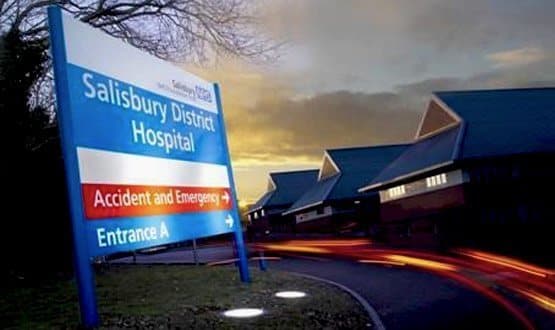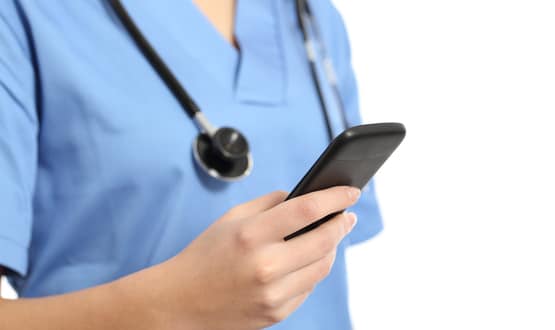Salisbury rethinks the working day (and night)
- 9 July 2013

The pressure on radiology departments is growing, and Salisbury is no exception.
“There’s a huge increase in workload, and everything has to be done quicker and reported quicker,” says Katie Johnson, consultant radiologist at its foundation trust.
That was then
Salisbury has 60 radiographers and 15 radiologists (11 full-time and four part-time) and serves a population of 250,000. Three years ago, its system for reporting images was inefficient.
“Work was allocated fairly, but not necessarily related to the times we were available to report,” says Johnson. “Work might be allocated while we were away from the department or even on annual leave; so there was inherent delay in reports.
“Admin staff received a significant number of calls from staff and patients regarding reports, and radiographers who were interested in imaging findings had to maintain their enthusiasm for looking up reports for some days after the imaging was complete.
“There were also the rush times, Friday afternoon and Monday morning, which were difficult and – at times – unsafe to handle.”
On-call rotas were also becoming increasingly hard to maintain. On-call radiologists, who finished a day’s work at 5pm, were able to do some reporting remotely, using a dedicated laptop.
However, if they needed to report on a complex case, they had to travel back to the hospital, which took time. As the hospital’s night-time workload increased, more and more on-call radiologists had to travel in at night; and then do a full day’s work the following day.
Since the trust was planning to adopt the NICE guidelines on imaging in cases of stroke, head and cervical injury, and transient ischaemic attack, the overnight workload was set to increase further.
Managing overnight workload
In the face of these pressures, a group of radiologists met to identify the problems and canvass solutions, asking radiographers, clerical staff and helpers, and clinicians for their views.
Making the whole radiology department responsible for any changes would, they hoped, improve their likelihood of being successful in the long term.
It became clear that the department needed to improve its reporting turnaround times, to manage the overnight workload better, and to have a better system for managing urgent imaging at evenings and weekends.
New targets were set to meet turnaround times (from an examination to the report being available to the referrer) of within 30 minutes for urgent cases, the same working day for inpatients and accident and emergency patients, and the next working day for all other cases.
It was decided that these turnaround times should be met in 90% of cases, to allow for the sometimes exceptional circumstances that made 100% impossible.
In response, the department made several changes to existing processes. A two-hour rota was introduced, so that, for example, CT and MR scans performed between 9am and 11am are now given to those on rota report between 11pm and 1pm.
Inpatient work is given to the staff member reporting when it comes in, so there is no report delay; although head scans are given to the duty radiologist. The duty radiologist takes all clinical queries from clinicians, GPs and radiographers to reduce interruptions to reporters.
Because the busiest time of day is between 4pm and 7.30pm, it was decided to keep on-call radiologists on-site until 8pm.
If there are calls after 8pm, and they are relatively straightforward, an on-call radiologist can report from home, using a dedicated laptop (although complex images, involving multiple trauma, still require a trip into the hospital).
“If you’re working in hospital, you work more efficiently than if you’re at home and have to keep coming back,” says Johnson. “It’s very tiring to go home and get called back in again, and go home and get called back in again.”
The trust also opted to use an outsourcing company, Medica, to report on CT head and cervical spine images from 11pm to 8am, instead of keeping radiologists on call overnight.
It has proved a cost-effective solution, says Johnson: “You just pay for a scan, there’s no up-front fee. If you don’t use it, you don’t pay for it.
“By outsourcing work overnight, we could stay later during the day and be on-site for weekend mornings. Overall, we do more inpatient work, as well as managing the end of the day better.”
All the reports produced by the outsourcing company are checked the following morning.
Meanwhile, the department has introduced some weekend working. MR lists now run from 8am to 8pm seven days a week, and the MR radiographers run urgent CT lists on Saturday and Sunday mornings.
A more organised workload
The new system has proved a success. Since its introduction, report turnaround time has improved, phone calls chasing reports have virtually stopped, and both radiologists and radiographers feel more in control.
“Everybody thinks it’s much better than it was, mainly because we’re a lot more organised in our workload,” says Johnson.
NICE imaging and reporting targets have been achieved. Figures for 2012 show that the target of same-day reporting for inpatients has been achieved in 100% of MR cases, 99.9% of CT cases, and 99.3% of plain film cases.
The department also publishes monthly figures to show how reporting times have improved in each modality. So, for example, in May 2012, 70% of MR images were reported by the next day, compared with 33.6% in May 2009.
The trust isn’t committed to staying with the new system, however – as technology changes, new working practices may be introduced, says Johnson.
“I can see us changing in the next couple of years – we’ll have a new PACS and RIS, and it may be that we need to think of another way of managing the work.
"You’ll get people who are more enthusiastic if the change has gone well the first time round.”




